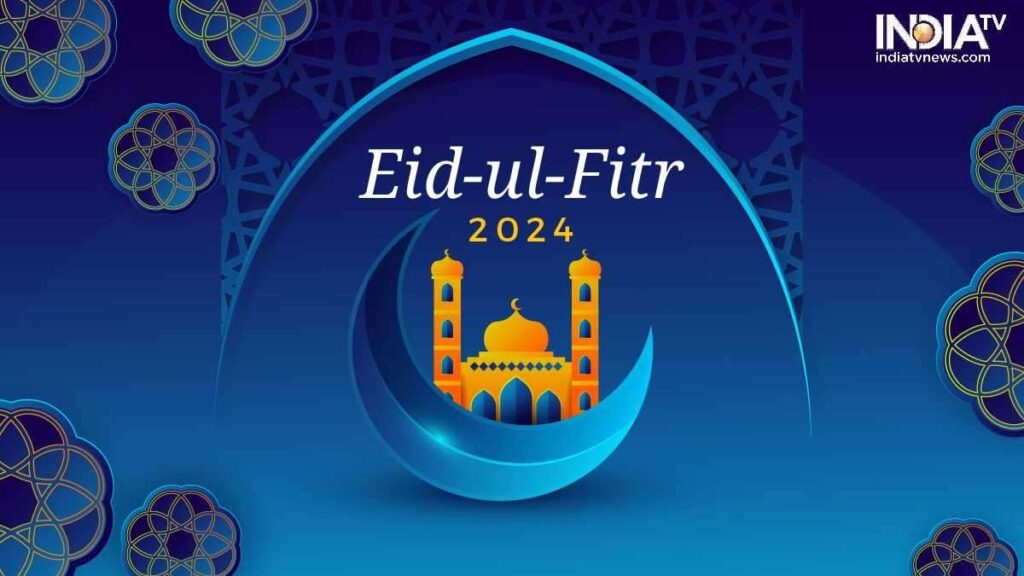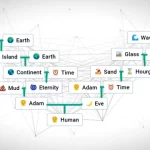When is Eid al-Fitr in 2024? Celebrating the End of Ramadan
Eid al-Fitr, also known as the “Festival of Breaking the Fast,” is a joyous occasion for Muslims worldwide. It marks the culmination of Ramadan, the Islamic holy month of fasting, prayer, and reflection. This article delves into the factors determining the date of Eid al-Fitr in 2024, explores the traditions and celebrations associated with this vibrant festival, and emphasizes the enduring spirit of Ramadan.
The Lunar Calendar and the Islamic Calendar
Unlike the Gregorian calendar most commonly used around the globe, the Islamic calendar is lunar-based. This means the months correspond to the cycles of the moon, resulting in a calendar that is roughly 10-11 days shorter than a solar year. Since the Islamic calendar follows the moon’s phases, the exact dates of Islamic holidays, including Eid al-Fitr, change from year to year relative to the Gregorian calendar.
Determining the end of Ramadan hinges on the sighting of the crescent moon, signifying the beginning of the next lunar month, Shawwal. Here’s where things get interesting!
The Importance of Moonsighting and Eid al-Fitr in 2024
Due to the lunar nature of the Islamic calendar, the exact date of Eid al-Fitr in 2024 cannot be definitively fixed months in advance. However, estimates can be made based on astronomical calculations. These calculations predict the date when the crescent moon will likely be visible after the new moon.
Here’s a prediction for Eid al-Fitr in 2024:
-
Estimated Start of Ramadan: Based on astronomical calculations, the holy month of Ramadan for the year 2024 is expected to begin in the evening of March 11th (subject to confirmation through moon sighting).
-
Estimated Eid al-Fitr: Following a 29 or 30-day Ramadan, Eid al-Fitr in 2024 is estimated to fall on the evening of Wednesday, April 10th, or Thursday, April 11th.
Why the Estimate Isn’t Set in Stone:
It’s important to remember that the actual sighting of the crescent moon by religious authorities in each locality holds the key to officially confirming the end of Ramadan and the beginning of Eid al-Fitr. Weather conditions and geographical location can influence the visibility of the crescent moon, leading to slight variations in the dates across different countries and regions.
Here’s the takeaway:
While estimates provide a general timeframe, relying on local religious authorities for the confirmed start of Eid al-Fitr is crucial.
Experiencing Eid al-Fitr: Traditions and Celebrations
Eid al-Fitr is a joyous occasion marked by specific traditions and celebrations:
- Preparing for Eid: In the days leading up to Eid, Muslims might prepare special dishes, new clothes for themselves and their families, and decorate their homes to create a festive atmosphere.
- Eid Prayers: On the morning of Eid, Muslims attend special Eid prayers, often wearing their finest attire. The prayers are followed by sermons emphasizing themes of gratitude, forgiveness, and helping those in need.
- Family Gatherings and Feasts: After prayers, families and friends gather for celebratory meals. Traditional Eid dishes vary by region but often include sweet treats like baklava and savory delicacies like meat stews.
- Gift-Giving and Visiting Loved Ones: Exchanging gifts, particularly with children, and visiting loved ones, especially elders and those who are unable to leave their homes, are important aspects of Eid celebrations.
- Socializing and Entertainment: Eid is a time for socializing with friends and extended family, enjoying community events, and engaging in festive activities like games and music.
The specific traditions and celebrations may vary depending on cultural background and location, but the essence of Eid al-Fitr remains the same: a joyous celebration marking the successful completion of Ramadan and a time for spiritual renewal and strengthening social bonds.
Looking Beyond the Dates: The Enduring Spirit of Ramadan
While the end of Ramadan and the festivities of Eid al-Fitr are significant, the true essence of the holy month lies in the spiritual growth and self-reflection it fosters.
The lessons learned during Ramadan, such as discipline, empathy, and compassion, are meant to be carried forward throughout the year. The end of Ramadan doesn’t signify the end of these practices; it’s a springboard to integrate them into daily life.
Eid al-Fitr serves as a reminder of the spiritual achievements during Ramadan and a time to celebrate with loved ones. It’s a culmination.
Here are some ways to keep the spirit of Ramadan alive beyond Eid al-Fitr:
- Maintain acts of charity: Giving back to the community and helping those in need shouldn’t be confined to Ramadan. Seek opportunities to volunteer, donate, or simply offer kindness to those around you.
- Sustain increased prayer: While Ramadan emphasizes daily prayers, strive to maintain a consistent prayer routine throughout the year. Prayer can be a source of peace, reflection, and connection with God.
- Continue mindful eating: The discipline and moderation practiced during Ramadan can be applied to your regular diet. Focus on healthy choices and mindful eating habits.
- Maintain self-reflection: The introspection encouraged during Ramadan is valuable year-round. Regularly dedicate time to reflect on your actions, thoughts, and goals.
Eid al-Fitr is a joyous celebration, but it’s also a launching pad for lasting spiritual growth. By carrying the lessons of Ramadan forward, Muslims can cultivate a more meaningful and fulfilling life throughout the year.
Frequently Asked Questions (FAQ) about Eid al-Fitr
When is Eid al-Fitr in 2024?
The exact date of Eid al-Fitr in 2024 cannot be definitively confirmed until the sighting of the crescent moon by religious authorities. However, based on astronomical calculations, it’s estimated to fall on the evening of Wednesday, April 10th, or Thursday, April 11th.
Why does the date of Eid al-Fitr change every year?
The Islamic calendar is lunar-based, and Eid al-Fitr is determined by the sighting of the crescent moon marking the beginning of the next month. This lunar cycle results in the date of Eid al-Fitr shifting approximately 10-11 days each year compared to the Gregorian calendar.
How do Muslims celebrate Eid al-Fitr?
Eid al-Fitr is a joyous occasion marked by attending special prayers, celebratory meals with family and friends, exchanging gifts, visiting loved ones, and participating in community events.
What is the significance of Eid al-Fitr?
Eid al-Fitr marks the end of Ramadan, a holy month of fasting, prayer, and reflection. It’s a time to celebrate spiritual achievements, express gratitude, strengthen social bonds, and share blessings with loved ones.
How can I learn more about Eid al-Fitr?
Consulting with local mosques or Islamic centers is a great way to gain a deeper understanding of Eid al-Fitr traditions and celebrations. Numerous online resources also offer valuable information about this important Islamic holiday.



